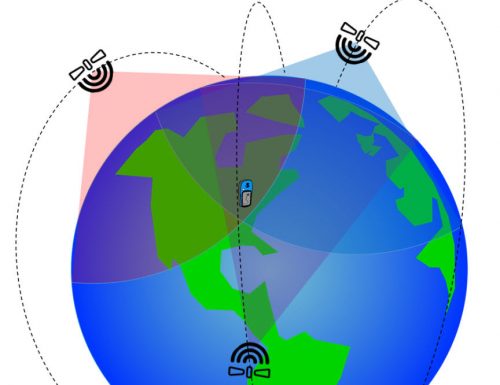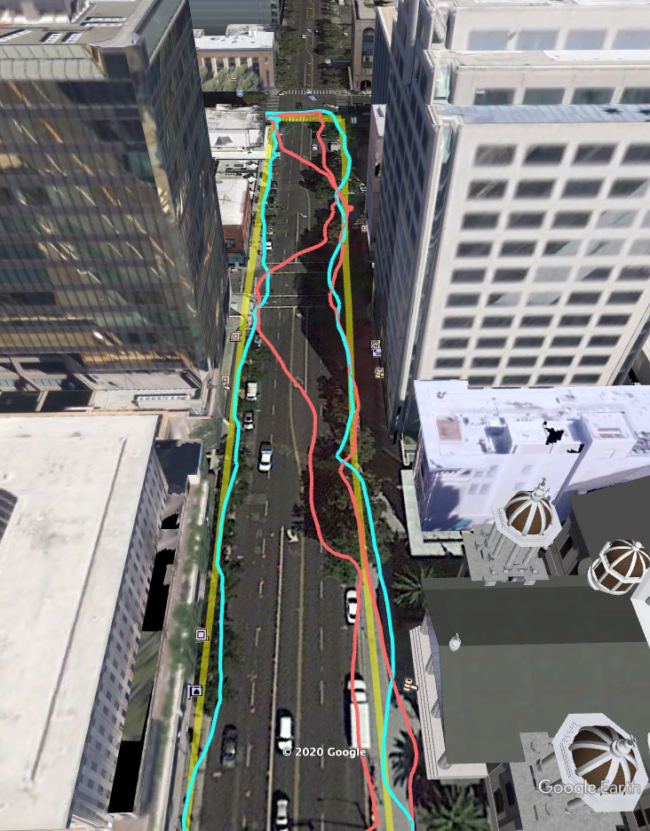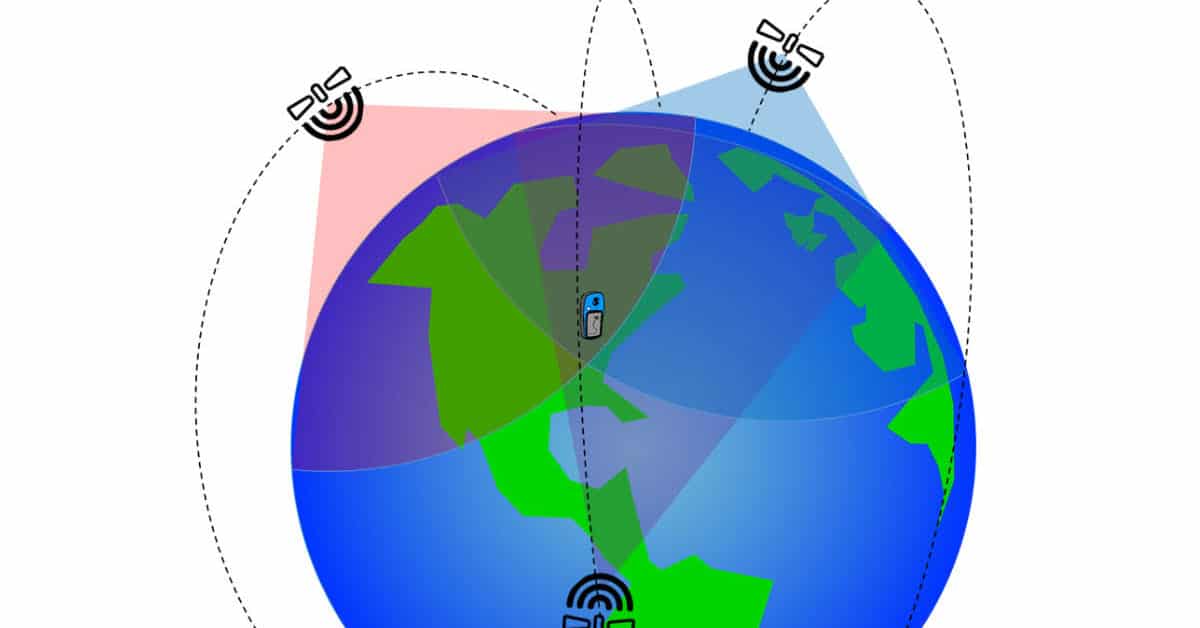The mobile, cell phone with the best GPS of 2020
– Take a look at these tips, tricks, and solution you can use to make your life much easier with your devices whenever problems arrive and complications which you may find difficult to deal with.
Normally, most mobile or cellular devices have a location system (which we usually know as “GPS”) of single frequency, whose main disadvantage is that it has a margin of multi-meter errorespecially in urban settings. However, today there are already Android phones that have a Dual frequency GPS, allowing them to display a exact or highly accurate location, with a margin of error of up to centimeters in the most rural or open areas.
The problem of cell phones not indicating a precise location not exactly an antenna question, but rather of chip GPS and the technology used. In September 2017, Broadcom introduced a GPS chip for smartphones that improves the accuracy of «5 meters current to only 30 centimeters»And is twice as efficient as its predecessor version. Fortunately, this dual frequency chip or variants based on it has already been integrated into various Android devices released in the last two years.
High precision GPS + satellites chip is the key
The 5 or 10 meters of precision that the current cell phone GPS has is sometimes not enough. For example, when it comes to tracking the location of your phone, in case it has been lost or stolen. Also when you are using GPS navigation and the system is confused between one and another neighboring streets.
El chip Broadcom BCM47755 it would be ideal in these circumstances. In combination with “high-precision” satellites, which are already 30 around the world (most European satellites Galileo), this chip can set locations within 30 centimeters of error.
How High GPS Accuracy Is Achieved
The basic operation is as follows. This Broadcom chip determines the approximate location of the device (margin of error in meters) with the help of three or more satellites that emit a L1 signal. That is, exactly as the GPS systems of current smartphones do. After that refine the position (centimeter margin of error) with the help of satellites that emit the L5 signal. Due to its different frequency, this signal is much less prone to distortion due to reflections or bounces off other surfaces. This is what helps the chip get a more accurate measurement of location, especially in dense places like urban areas, which is where the problem practically lies.

How the GPS location of a smartphone is detected. Image: actonline.org
Previously, this technology was limited to industrial settings, such as oil and gas exploration. But with the massification of L5 satellites, it has already been possible to implement it in massive technology such as cell phones.
To achieve this centimeter precision, when environmental conditions are poor, the company Sapcorda Services offers an infrastructure on the ground, which determines errors in the measurements of GPS and Galileo satellites, due to atmospheric conditions. This information is sent to smartphones to achieve that centimeter precision. In countries like Japan, QZSS satellites are being put into orbit that guarantee good coverage all the time in dense cities like Tokyo.
GPS 15 times more accurate and 2 times more efficient
This new Broadcom GPS chip consumes half the battery life of its predecessor version. This is probably due to the 28 nanometer scale fabrication. And definitely also to the implementation of a dual-core processor. The ARM Cortex M-0 is an efficiency core, which will handle simple continuous tasks. The second, a Cortex M-4 is a high-performance core, for demanding processes only when required, according to the manufacturer.
High precision GPS mobile phones
As I already indicated, most cell phones incorporate a single frequency (L1) location system, but today there are already several dual frequency devices (L1 / L5) that, except for one (spoiler: Xiaomi Mi 8), they should be better overall to indicate a more precise location, especially in rural areas or ‘open’ places.
To see which devices have dual frequency positioning systems, a good online resource is Galileo’s website. For example, there you can see that no iPhone has this feature (without taking into account the iPhone 12). In the case of Android, the following devices are dual frequency:
- Asus ROG Phone 2/3
- Asus Zenfone 6 (ZS630KL)
- Pixel 4 / 4 XL
- Honor 30 / 30 Pro / 30 Pro+
- Honor V30 / V30 Pro
- Honor View 20 / View 30 / 30 Pro
- Huawei Mate 20 / 20 Pro / 20 RS Porsche design / 20X,
- Huawei Mate 30 / 30 5G / 30 Pro / 30 Pro 5G / 30 RS Porsche Design,
- Huawei Mate X / XS
- Huawei Nova 5T / 6 / 6 5G / 7 Pro 5G
- Huawei P30 / P30 Pro / P30 Pro New Edition
- Huawei P40 / P40 Pro / P40 Pro+
- Lenovo Legion Duel / Legion Pro
- LG Velvet / Velvet 5G UW
- Meizu 16s Pro
- Motorola Edge+
- Motorola One 5G
- OnePlus 7/7 Pro / 7T / 7T Pro / 8/8 5G / 8 5G UW / 8 Pro / Nord
- Oppo Ace2
- Oppo Find X2, Find X2 Lite/Neo/Pro
- Oppo K7 5G
- Oppo Reno 10x Zoom / Reno Ace / Reno 3 5G / Reno 3 Youth
- Realme X2 Pro / X3 Superzoom / X50 5G / X50 Pro 5G / X7 / X7 Pro
- Samsung Galaxy Note 10 / Note 10+
- Samsung Galaxy S20 / S20 5G / S20 5G UW / S20 Ultra / S20 Ultra 5G / S20+ / S20+ 5G
- Sharp Aquos Zero 2
- TCL 10 5G
- Vivo iQOO 5 5G / iQOO 5 Pro 5G
- Vivo X50 Pro +
- Xiaomi Mi 10 5G / Mi 10 Lite 5G/ Mi 10 Pro 5G / Mi 10 Ultra / Mi 10 Youth 5G / Mi 8 / Mi 8 Explorer Edition / Mi 8 Pro / Mi 9 / Mi 9 Explorer / Mi 9 Pro / Mi 9 Pro 5G / Mi 9T Pro / Mi Mix 3 / Mi Mix 3 5 G / Mi Note 10 Pro
- Xiaomi Poco F2 Pro
- Xiaomi Redmi K20 Pro / Redmi K20 Pro Premium / Redmi K30 5G / Redmi K30 5G Racing / K30 Pro / K30 Pro Zoom / K30 Ultra / K30i 5G
- ZTE Nubia Red Magic 3/3S/5G/5S
Google fixes further improve accuracy

The yellow line is the route to follow or trace. The red line is what is normally achieved with the normal location system, and the turquoise line is what is achieved with Google’s 3D mapping assisted corrections.
In the Play Services application, Google has integrated what it calls “3D Mapping Assisted Corrections” to further improve the accuracy of satellite navigation systems on cell phones, as you can see in the image above. Basically they are 3D models of more than 3850 cities in the world, which are used to correct position calculation errors when there are buildings that block the line of sight between the cell phone and the satellites. In other words, these Google corrections help enormously to improve the position of a cell phone in urban environments.
This technology currently works on the Pixel 4a 5G and Pixel 5, but in the coming weeks Google will bring it to all devices with Android 8 or higher. For now it only works for pedestrians in the 3850+ cities of the world (for Spanish speakers, large cities in Spain, and Mexico, Brazil and Argentina in Latin America), but the company indicates that it will soon make it compatible for driving.
Another requirement to take advantage of this technology is that your device supports it. Broadcom BCM47765 chip, Qualcomm SOCs with new technology Qualcomm Location Suite and the SOC Mediatek Dimensity 5G its compatible.
More information: ieee.org, Android Developers.
How to locate your cell phone by IMEI, GPS or Internet (Complete guide)
How to see the location history of your cell phone in Google Maps
How to take GEOREFERENCED photos with your Android cell phone (photos with location)















